Apple iPhone 6s Plus vs Samsung Galaxy S6 edge+
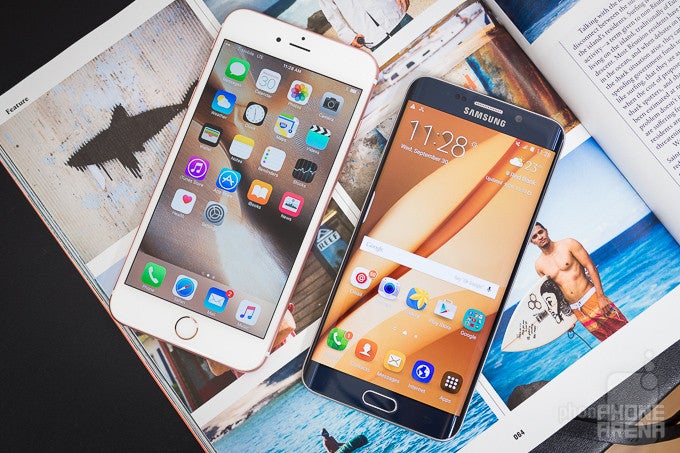
Introduction
The 5.5-inch iPhone 6s Plus comes to the scene as the second-generation phablet by Apple after the original 6 Plus. While there are almost no visible changes to the outside, under the hood, the iPhone 6s Plus has abundant upgrades: the new Apple A9 system chip, a 12-megapixel camera with 4K video, more megapixels for the selfie camera, and 3D Touch that allows the phone to sense how strong you press on the screen.
At the same time, Samsung has rushed to the finish line and released its new Galaxy S6 Edge+ phablet earlier this year; it offers a similarly rich set of features with an even bigger, 5.7-inch display with a fancy curve on both edges, a beautiful design that mixes glass and metal, as well as a powerful, in-house Samsung Exynos chip.
The battle of these two, however, is more than just a battle of devices: it’s a battle of platforms and ideas, the iPhone with iOS 9 and an outstanding selection of free first-party apps and a rich ecosystem, on one hand, and the Edge+ with the open Android with its endless customization options on the other. This year, the battle of both devices and ecosystem is more heated than ever, but is there a winner?
Design
Both excel in terms of looks: Apple builds the iPhone with a unibody design, while the Galaxy S6 Edge+ is a stylish concoction of metal and glass.
With the ‘s’ series of phones, Apple traditionally makes little if any changes to the outwards appearance of phones, instead focusing on under-the-hood changes. The iPhone 6s Plus is also a part of that tradition: it’s practically impossible to tell it apart from its predecessor, both featuring a metal unibody with a sleek profile. Pick one up, though, and you can easily tell that the 6s Plus is heavier (it’s a hair thicker too). In fact, it’s noticeably heavier than most smartphones of its size.
The Samsung Galaxy S6 Edge+, on the other hand, is also a stylish affair with its metal frame sandwiched between two pieces of toughened glass. Despite its larger, 5.7-inch display, it somehow manages to be both narrower, shorter and thinner, which is quite important for the ease of use of a phablet. It’s also noticeably lighter (nearly 20% lighter than the iPhone!), another important advantage for such a large phone.
In terms of buttons, both phones come with metal keys that provide enough click and travel to be comfortable to press. There is a fingerprint scanner built in the home keys of both handsets, and in both cases we find them similarly fast and reliable in daily use.
Display
The Galaxy S6 Edge+ comes with a 5.7-inch Quad HD Super AMOLED display, while the iPhone 6s Plus sports a 5.5-inch Full HD IPS LCD screen, and both look great in terms of colors. The iPhone’s 3D Touch, however, adds something that Samsung can’t match.
The big highlight of the iPhone 6s Plus is support for 3D Touch on its large, 5.5-inch display with a resolution of 1080 x 1920 pixels. 3D Touch opens up a new layer of interaction with your phone: you can now press harder on the screen to get additional options and the phone tells between a hard and a softer press.
The Samsung Galaxy S6 Edge+ features a slightly bigger, 5.7-inch display that ups the resolution to 1440 x 2560 pixels (Quad HD). Unlike the iPhone’s LCD screen, the S6 Edge+ features the latest of Samsung’s Super AMOLED displays and this means you get those typical perfect blacks and outstanding viewing angles.
When it comes to colors, both look great: everything looks lively on both, but there are some slight differences. The iPhone 6s has colors that look a bit bluish, on the cold side, while the S6 Edge+ has slightly more overwhelming greens, and you can take a look at the benchmarks below to see that both shy a bit from being perfectly natural, but the issues they have are rather minor niggles.
Brightness is a bit higher on the iPhone 6s Plus at 593 nits, while the S6 Edge+ clocks in at 502 nits, which makes the iPhone screen a bit more comfortable to read outside on a sunny day. At night, it’s the other way around: the Galaxy can fall down to 1 nit and with Android’s screen dimmers, you can dim the screen to very low levels for comfortable night reading, while the iPhone can only go down to 5 nits, which is fine, but still a tad stressful on the eyes for night use.
Interface and Functionality
iOS 9 versus Android skinned with TouchWiz: both offer great features, with Apple still boasting a more robust ecosystem, and Android shining in ways of customization.
It’s the interface where two ideas clash: the iPhone 6s runs on iOS 9, which has a truly outstanding selection of free first-party apps and a rich ecosystem, but does not offer all that much in ways of customization, while the Galaxy features Android clad in TouchWiz clothes and offers plenty of customization, but not as rich of a choice when it comes to some apps.
First, iOS 9. The newest iteration of the Apple mobile platform brings heaps of new features: the new 3D Touch way of interaction is arguably the most important one - you can now 3D-Touch homescreen icons to get quick-access shortcuts, and you can also Peek and Pop, or put simply, press a bit harder and much harder to take a quick look at your emails for instance.
iOS 9 also brings the Spotlight Search as a separate, left-most homescreen, and it is enriched with suggestions, news, and so much more, making it really very useful (and in a way somewhat similar to Google Now). The huge thing about iOS is that it comes with a guarantee for timely future updates.
Samsung’s rendition of Android, on its part, does not come with that promise. Android 6 Marshmallow is already out for the Nexus family, but it’d probably take at least a couple of months until Samsung brings it to its top-end S6 Edge+. Android 5.1 Lollipop on the Galaxy, however, is still a great platform: TouchWiz is leaner and faster than ever, with support for Themes for customization, and a new set of colorful, good-looking icons and overall cheerful visual style.
Android is also the more open system: it allows you to easily drag and drop files to it, and has much fewer restrictions than iOS, but it lacks many of the excellent first-party apps that Apple offers (often for free) – things like iMovie and GarageBand.
On the other hand, there is the edge: the signature feature of the Galaxy. It allows you to quickly access your contacts and shortcuts to apps and is just a neat little feature that in itself is not a ground-breaking thing, but does add something interesting to the interface.
Processor and Memory
Both built by Samsung (the iPhone partly), the Apple A9 and Samsung 7 Exynos Octa are arguably the two most powerful system chips on the market currently.
The iPhone 6s Plus might not have changed on the outside, but it brings massive improvements under the hood. The new phablet sports Apple’s brawny A9 system chip, which is - somewhat ironically - made by Samsung (and also by TSMC), but it’s an Apple-designed architecture that uses two large cores rather than the trendy on Android octa-core setups. Those two cores excel in single-core performance tests, and are also at the top level of multi-core performance scores.
The Galaxy S6 Edge+, on its part, features Samsung’s own Exynos 7420 system chip, an octa-core solution using four high-performance Cortex A57s and four battery-savvy A53s in a big.LITTLE setup. Just like the A9, it’s built on the latest manufacturing process and it delivers similarly well in terms of performance: still shy of the A9 in terms of single-core speed, but faster in multi-core loads. Put simply, both of these phones are blazing fast.
Then, there is the storage situation. The base model of the iPhone 6s Plus starts at just 16GB of internal storage and while that might be enough for light users, it is hardly sufficient in the era of 4K videos. The other storage options for iPhone buyers are the 64GB model ($100 more) and a 128GB version ($100 on top of the 64GB price). At the same time, Apple has made some huge improvements to memory speeds. It uses an SSD-class controller and a mixture of SLC/TLC NAND storage. This results in some big gains in memory speeds. Put simply, the new iPhone 6s is much faster at writing and reading large files.
Тhe S6 Edge+ ships with 32GB in the base version (it features UFS 2.0 storage), and there is also a 64GB model. Neither of the two handsets supports microSD card expandable storage.
Camera
The iPhone 6s Plus has a 12-megapixel camera, while the Galaxy S6 Edge+ sports a 16-megapixel shooter: both take excellent images with some slight differences. 4K video is also amazing on both.
The iPhone 6s Plus features an upgraded camera: it now captures 12-megapixel images, while the Galaxy S6 Edge+ sports a 16-megapixel rear camera. Keep in mind that if you choose to capture images in 4:3 aspect ratio on the S6 Edge+ (the default is 16:9), then you also fall back to the same 12-megapixel resolution. In terms of sensors, the iPhone has a 1/3" one, likely a custom Sony build, and there’s an f/2.2 aperture. The Galaxy, on the other hand, features a larger, 1/2.6” sensor with a wider, f/1.9 aperture.
The camera apps on both phones offer a great experience. First and foremost, they are quick to start: you have the useful Control Center shortcut for the iPhone camera, while the Galaxy features a neat Quick Start shortcut to open the camera (double click the home button anywhere). The interface is different: the iPhone has a very clean interface where you swipe to switch between shooting modes, while Samsung has a fairly useful but a bit more cluttered interface. We appreciate having a separate button for video recording in Samsung’s camera app for instance, and the fact that you can easily switch settings within the app, while on the iPhone you need to exit to settings to do something as simple as changing between 4K and 1080p video recording. The Galaxy also comes with a manual mode, which might be useful to enthusiasts, while on the iPhone you have to rely on third-party apps for that.
So which is the better camera? There is really no clear answer to that, as both take fantastic images: the iPhone looks better in some cases, the Galaxy - in others. The general differences are the following two: more dynamics and more contrast in the iPhone images, where colors look slightly boosted for an extra pop, while generally images on the Galaxy look a bit more toned down and more realistic; more detail on the Galaxy but also an overly aggressive noise compensation that might smudge out things in low light, whereas the iPhone tends to present a more realistic (not smudged out) detail, even when there’s noise. Focusing is impressively fast on both phones as well, so it boils down to preference: whether you want the slightly artificially warmedand more ‘popping’ colors from the iPhone, or the more realistic tones of the Galaxy.
Then, we look at the selfies. Both phones come with 5-megapixel selfie cameras with the big difference being in the field of view: it’s much wider on the Galaxy than on the iPhone, so that you can fit more people in the frame. At the same time, for selfie portraits, the field of view on the iPhone seems more appropriate as images appear flatter and easier to frame. Selfies on the Galaxy are definitely more detailed, with pleasing colors, but also way too aggressive with the skin smoothening effect, while the iPhone often seems to have noticeably boosted colors, an effect that might appeal to some but looks a bit artificial compared to reality.
Then there is 4K video. It’s a new feature on the iPhone 6s Plus, and not so new on the Galaxy S6 Edge+. It looks excellent on both and both run a bit warm while recording it. What’s nice about the iPhone 6s Plus is that it has no limitations when it comes to the time of the recording. What about quality? The same story: slightly boosted colors on the iPhone and more toned down visuals on the Galaxy, and the same overly aggressive noise suppression (smudging) on the Galaxy, while the iPhone retains natural noise in low light without trying to suppress it too much. Also, both focus super fast and both support continuous auto-focus.
Multimedia
Media is Apple’s forte: the iPhone comes with some great media apps that Android in the form of the Galaxy S6 Edge+ can’t match.
Media is Apple’s bread and butter, its core strength. The company has always been close to creatives, so much so that Samsung ridicules its users for assuming creative superpowers (Remember the catchy “Dude, you’re a barista!” ad?).
There really is no contest, though, when it comes to the media capabilities of the iPhone compared to the S6 Edge+. Naturally, both do an equally fine job for basic tasks: browsing through photos, watching a video and playing music, but for all else the iPhone has got a big advantage with the apps made by Apple.
First, the built-in image editor in Photos is simple yet very powerful, it does an excellent job managing images. You also have Live Photos that are well integrated in the app and look great.
For videos, iMovie (a free download) is an extremely capable video editor that handles multiple 4K videos without breaking a sweat, with effects, transitions, text and so on. The Galaxy can only trim 4K videos and really doesn’t have a full-blown 4K video editor, which is a bit absurd.
Then, the Music app that now integrates seamlessly with the streaming service Apple Music is a work in progress, but its deep integration with the platform, huge catalog and great, curated playlists are definitely impressive. On the Galaxy you can get third-party apps like Spotify, which are also doing a great job, but they lack that deep integration within the system. Android also still does not have a free and robust music app like GarageBand for enthusiasts.
We’re also hugely impressed with the speaker of the iPhone 6s Plus: it’s now improved, its sound featuring more depth and brilliance. The Galaxy is also good, just not that great.
Battery life
Both phones easily last a day, and if you use them lightly, you might get even two.
Apple’s iPhone 6s Plus is a great phone when it comes to battery longevity: the large form factor has allowed Apple to include a large, 2750mAh battery that would easily last you a day and a half, and even two days and more with lighter use. The Samsung Galaxy S6 Edge+, on the other hand, has a 3000mAh battery, and lasts a similarly long time.
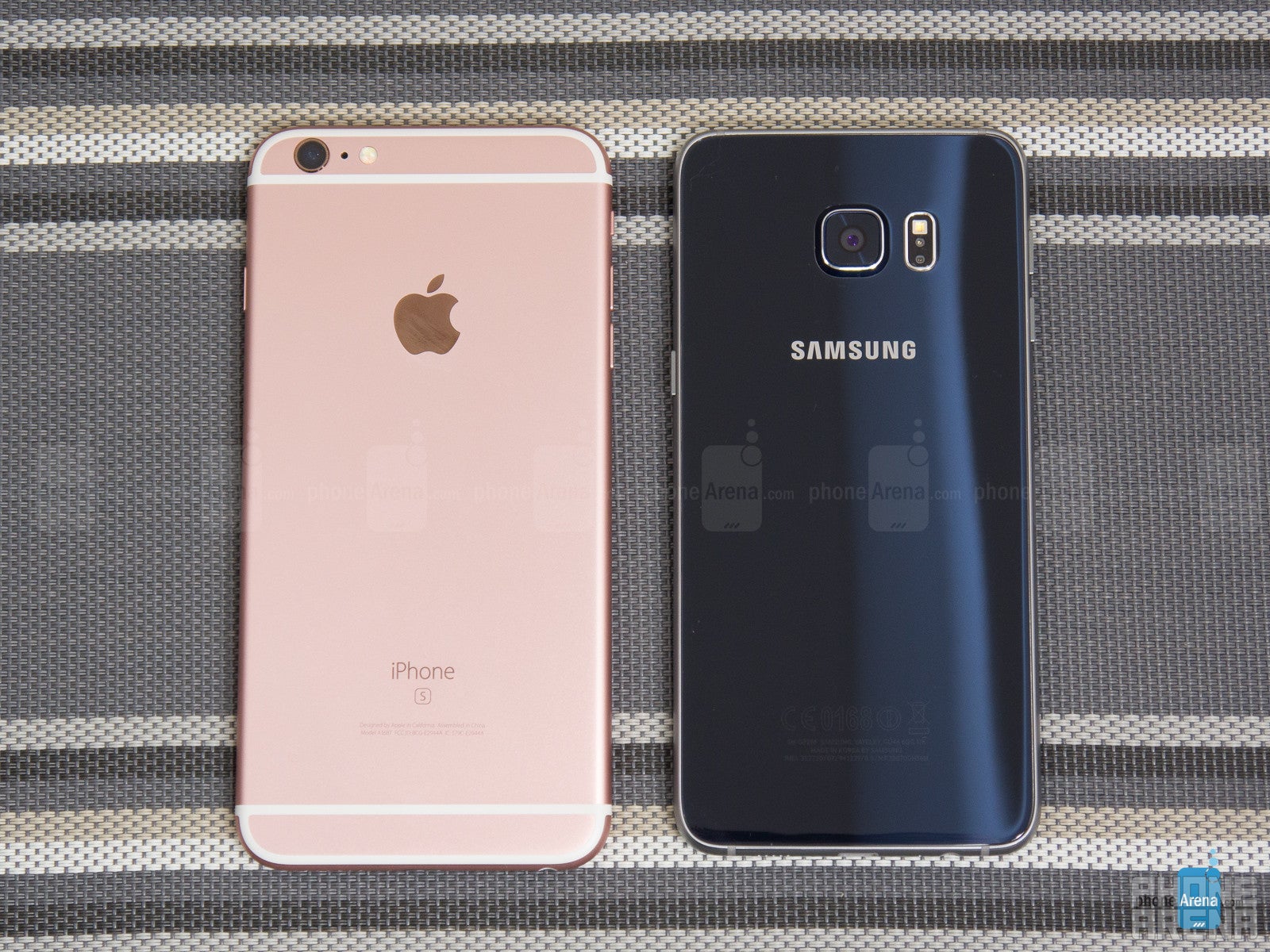
With iOS 9, Apple introduces Low Power Mode to the iPhone, and it’s something that you are prompted to enable once your battery reaches below 20% (you can also enable it anytime manually via the Settings). It cuts on animations and background data checks, but is not as effective as Samsung’s radical Ultra Power Saving Mode (UPSM) that can squeeze a day of battery life at 10% charge. UPSM turns the screen black and white, though, and disables all but essential apps (you can basically use the dialer, messages and Facebook).
Charging times are depressingly slow on the iPhone 6s Plus: it’s still beyond us how it takes two hours and forty five minutes to fully charge Apple’s phablet from 0 to 100%. In comparison, the S6 Edge+ with its fast charging does this for half the time: an hour and twenty minutes.
Conclusion
The longer we think about it, the clearer it seems that the race between Android and iOS, Samsung and Apple, the Galaxy and the iPhone is now the closest it’s ever been. Samsung deserves praise here: it is the one that has made big leaps in design, camera, battery life and charging, screen quality and even ease of use with the cleaner TouchWiz.
At the same time, Apple continues holding the lead in terms of the ecosystem and most notably media and apps, where the apps made by Apple make a huge difference. The iPhone 6s Plus also adds 3D Touch, a hugely promising technology, and the work done with the Apple A9 is also impressive. On the downside, having just 16GB of storage in the base model does seem limiting for many users, and not having quick charging is downright disappointing.
So which one should you choose? It really is a matter of personal preference: and not just in design, but also in platform. You won’t regret either.
Apple iPhone 6s Plus
Pros
- Display has great-looking colors
- Long lasting battery
- Fast and reliable camera
- iOS 9 is improved slightly, but in places that matter
- Apps made by Apple are outstanding
- 3D Touch is promising
Samsung Galaxy S6 edge+
Pros
- Phone has great size given the display diagonal
- Sharp and great-looking 5.7” display
- Camera takes great images and video
- Quick Launch shortcut to camera is neat
- 32GB of internal storage in base version

Follow us on Google News

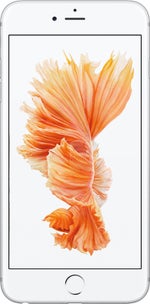
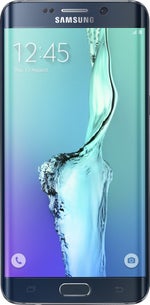












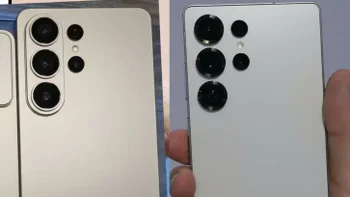








Things that are NOT allowed:
To help keep our community safe and free from spam, we apply temporary limits to newly created accounts: